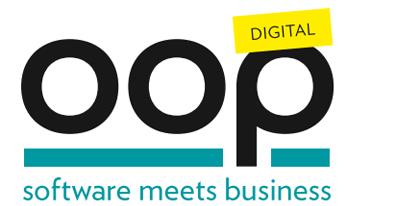
SOFTWARE MEETS BUSINESS:
Die Konferenz für Software-Architektur
31.01. - 04.02.2022

SOFTWARE MEETS BUSINESS:
Die Konferenz für Software-Architektur
31.01. - 04.02.2022

Die im Konferenzprogramm der OOP 2022 Digital angegebenen Uhrzeiten entsprechen der Central European Time (CET).
Unser Programm gibt es auch als praktische PDF-Datei >>Zum Download
Die Teilnehmer erlangen aktuelle praktische Kenntnisse zur Sicherheit von Web-basierten Architekturen in Entwicklung und Einsatz, inkl. Schutzmaßnahmen und Best Practices. Insbesondere wird die kürzlich veröffentlichte Version 2021 der „OWASP Top 10 Security Vulnerabilities“ des „Open Web Application Security Project“ vorgestellt, die alle vier Jahre aktualisiert werden. Es gibt praktische Übungen mittels Open-Source-Werkzeugen für die Sicherheitsanalyse von Architekturen und Implementierungen,…
In der Architekturarbeit ist es wichtig, sich auf Gemeinsamkeiten bei den Erwartungen der Stakeholder zu konzentrieren. Der ausschließliche Fokus auf Gemeinsamkeiten führt jedoch oft zur Trennung und Kategorisierung von Stakeholdern - ein guter Boden für Stereotypisierungsprozesse und Konflikte. Die Fokussierung auf Unterschiede und Gemeinsamkeiten zugleich fördert konstruktive Beziehungen und Vertrauen. Für Software Architekten ist es daher hilfreich, mit einem Diversity-Verständnis von…
Today we must deal with shorter time-to-market, increasing complexity and more agility while keeping quality and other key system properties high.
To address these challenges the right timing in testing is critical but often not explicitly tackled. Therefore, in this interactive tutorial we reflect on our current approach on timing in testing, investigate and discuss needed strategies, tactics, and practices in different areas, and share experiences and lessons learned to improve timing in…
Die guten Erfahrungen mit agilen Methoden haben nun auch die eher konservativen Firmen erreicht, der Change wird ausgeweitet. Ein agiler Change bedeutet i.d.R. auch eine Revolution in der Unternehmenskultur. Starre Hierarchien und feste Strukturen stehen auf einmal selbstverantworteten, crossfunktionalen Teams, neuer Fehlerkultur und einem ganz anderen Arbeitsstil gegenüber. Nun kommt bei vielen Management 3.0 ins Spiel und schon trifft Delegation Poker auf Command & Control oder Merit Money auf…
This tutorial introduces to agile requirements engineering. The half day delivers practical guidance from our projects across different industries. While being based on the IREB agile RE primer curriculum, it has more practical focus and avoids agile basics and theory. Yet, participants are eligible to IREB certification. We give practical tips for designing agile requirements processes. Attendees will learn how to combine needs of systematic requirements engineering with agile principles.…
Functional programming is the future of software development. As software gets ever more complex, unintended side effects flourish - you push on one side, and something unexpected squirts out the other. Functional programming cuts down on complexity through high-level abstractions and avoids unintended side effects through pure functions. The result is simple and elegant code that captures the essence of the problem you're trying to solve. Fortunately, functional programming is easy to learn,…
Security is an important topic, especially when developing software. But it is seen as complex and is holding everyone back, often put off until the end and delegated to an external person or group.
To be effective security needs to be a continuous part of the development process and to involve the whole team.
Security games can help to achieve this. They involve the whole team and facilitate the learning and application of security principles. They offer a way to integrate expert knowledge and…
Agile Coaches und Scrum Master sind in Transformationsprojekten besonders gefordert. Es braucht kontinuierliche Selbstreflexion und Klarheit, um in einer Veränderung eine neue Kultur vorzuleben und dabei selbst in Balance zu bleiben. In der Sozialen Arbeit ist Supervision der Standard und ein elementarer Teil der Qualitätssicherung, sowie der Burn-out-Prophylaxe für Mitarbeiter:innen. Wird es Zeit, auch im agilen Unternehmenskontext Supervision als Standard anzubieten? Wir glauben schon!
Maxima…
Traditionally, requirements were used as a means to communicate between customers and development organizations. Unfortunately, requirements suffer from many limitations.
An alternative approach is to focus on outcomes and to use value modeling as a mechanism to quantitatively define the desired outcomes. This value model can then be used for experimentation by humans using DevOps and A/B testing or using machine learning models for automated experimentation.
The tutorial provides introduction of…
Do you know that some forecasts project that in 2030 IT will account for 21% of all energy consumption? So, if we do not change the way we implement software, we will contribute to the increase in the carbon footprint. This means it is about time to take another look at how agile development can help decrease energy consumption.
In this workshop, we'll explore how the agile principles can guide us to more sustainability, and we'll provide you with concrete ideas for increasing sustainability in…
There are several architecture models with prescribed views and notations. The Keep It Short & Simple architecture model is different. We create pieces of documentation iff they benefit stakeholders. We do so using drawing tools, not modeling tools. We say no to BDUF and yes to Important Design Up Front. We follow 7 tips for creating diagrams that are expressive, not ambiguous, and help you to successfully understand and evolve them, and build a system from them. We complement the design…
Despite being hyped in the Agile community because of Google discovering its importance, psychological safety alone is not enough. It is a necessary but not sufficient precondition for successful intelligent and high-performing teams. But what else is needed? This workshop will present additional research as well as tools used by psychologists that boost team intelligence and performance and explore the potential for their use in their teams. Participants will have the opportunity to try some…